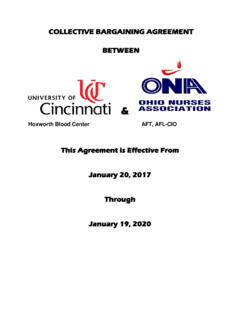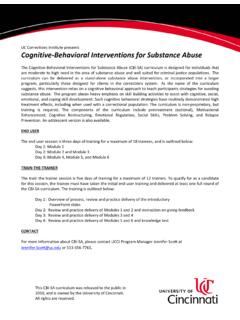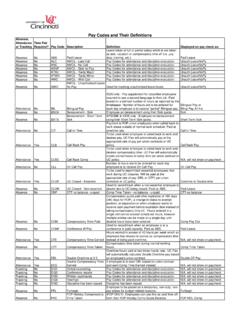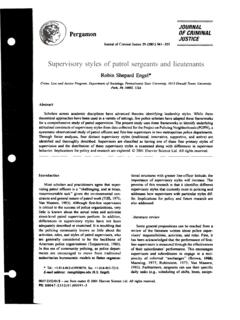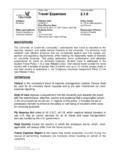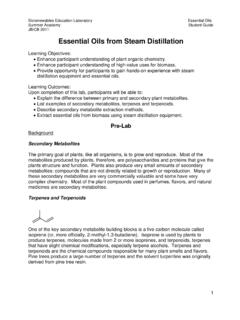Transcription of THE CHEMISTRY OF LIFE !! ATOMS, MOLECULES, AND …
1 THE CHEMISTRY OF LIFE !!ATOMS, MOLECULES, AND ELEMENTS IN OUR BODYCOMPILED BY HOWIE BAUMTHE CHEMICAL LEVELA toms are the smallest stable units of matter. They can combine to form molecules with complex shapes. The atomic components and unique three-dimensional shape of a particular molecule determine its function. For example, complex protein molecules form filaments that produce the contractions of muscle cells in the STUDY CHEMISTRY IN A CLASS ABOUT THE HUMAN BODY ?Body functions depend on cellular functionsCellular functions result from chemical changesElementsare made of chemically identical anything that has mass and takes up space. It is composed of elements. Bulk elements required by the body in large amounts Trace elements -required by the body in small amounts Ultra-trace elements required by the body in very minute amountsWhat is an Atom?
2 An atom is the smallest particle that an element can be divided and still be that element. For example the smallest particle of carbon is a single atom of carbon. If you divide it, it is no longer carbon anymore. They can combine to form molecules with complex shapes. The atomic components and unique three-dimensional shape of a particular molecule, determine its OF CARBON CARBON ATOM5 Atoms-composed of subatomic particles: Proton carries a single positive charge Neutron carries no electrical charge Electron carries a single negativechargeThe Nucleus Central part of atom Composed of protons and neutrons Electrons move around the nucleusElectron(e )Lithium (Li)Proton(p+)Neutron(n0)Nucleus00++0+0- --THE STRUCTURE OF AN ATOMThe nucleus of the atom The neutrons and protons are grouped together in the nucleus, which is at the center of the atom and make up most of the atom s mass.
3 There is a huge amount of space between the outer moving electrons and the nucleus. Theelectron cloud has a radius10,000 times greater than thenucleus. If the atom were the size of our classroom, the nucleus would be the size of a single grain of sand in the center of the room. If the nucleus were the size of a peanut, the atom would be about the size of a baseball stadium. The diameter of the nucleus is about 1/10,000 the size of an atom but it contains more than 90% of it s mass !!7 IONS If an atom gains or loses one or more electrons, it acquires a net electric charge and becomes an ion. Hydrogen atoms and most mineral and trace element atoms readily form ions. Because of their charge, ions are able to conduct electricity when dissolved in water The ionic forms of mineral elements are collectively referred to as electrolytes.
4 Its interesting that these are the ions we need in our body, to reduce leg and other types of cramping !!10 FOODS TO NATURALLY REPLENISH YOUR LOST ELECTROLYTESELECTROLYTES The proper concentration of electrolytes in your blood is essential to your health. Your cardiovascular and nervous systems, to name just two, require electrolytes to function well. Differences in the concentration ofsodiumandpotassiuminside and outside of cells allow your nerve and muscle fibers to send electrical impulses (which is how these cells communicate and get your body to react and move). When you exercise or get hot and sweat, the sweat contains salts which are electrolytes and need to be DRINKS WITH ELECTROLYTESIONIC BONDINGWhen we use salt in some of the foods we eat, the 2 atoms separate out in the watery conditions in our bodies and the cells in the stomach lining uses the chlorine atoms to make hydrochloric acid which it uses to digest our food !
5 ! SODIUM CHLORINE = SODIUM CHLORIDE (SALT)SodiumChlorineSodium chlorideSodiumis a highly reactive metal, especially when put in water. Chlorineis a poisonous gas but when they are made into compounds and put into a water solution, the ions of the 2, highly different materials come together to make common table salt Sodium Chloride or NaCl. Ionic substances tend to form crystalline shapes rather than distinct second type of chemical bonding is covalent bonds, which is when 2 atoms share an electron . This is how the amazing process of 2 gases 1 atom of Hydrogen and 2 atoms of Oxygen combine together, to make water !!OXYGEN + 2 HYDROGEN ATOMS = WATERHUMANS ARE 72 % WATER !!An adult who weights 210 pounds, contains about 60 litersofwater.
6 This is equal to 30, two-liter pop bottles of water, as shown below !!PURE WATER Really really pure water, the kind that is necessary to clean electronic chips used in devices like computers and smart phones is harmful to the human as Ultra Pure Water, it is just normal water that has been through such a severe cleaningprocess, that only the H2O molecules are left -That means that there are no specks of dirt, salts, minerals or even viruses present in the great for semiconductors, this is exactly the property that makes it harmful for humans. If ingested, it gets right to work and starts to absorb all the valuable minerals present in the body. Tests have shown that even as little as a glass of this liquid, could have a negative effect on the human , LIQUIDS, GASES, AND PLASMASWHAT IS THEIR DIFFERENT STRUCTURE BASED ON ?
7 The Four States of MatterBasis of Classification of the Four types:Based upon particle arrangementBased upon energy of particlesBased upon distance between particlesSOLIDS LIQUIDS GASES PLASMASP hase DifferencesSolid definite volume and shape; particles packed in fixed definite volume but indefinite shape; particles close together but not in fixed positionsGas neither definite volume nor definite shape; particles are at great distances from one anotherPlasma high temperature, ionized phase of matter as found on the sun and in Coal, sugar, ice, bone, and iron. Definiteshape and volume. The shape doesn tdependonthe shape of their container. The particlesare packedtightlytogetherand theyare almostincompressible.
8 Solidsexpand onlya little, whenheatedLIQUIDS Particles of liquids are tightly packed, but are far enough apart to slide over one another. Liquids have an indefinite shape and a definite are not compressible They will fill the shape of the container they are put inpH OF LIQUIDS (pH stands for the potential of Hydrogen)Definition: A number value that expresses the acidity or alkalinity of a solution on which 7 is neutral, lower values are more acid and higher values more rain has a pH of slightly acidic because of the carbon dioxide picked up in the earth's atmosphere by the is interesting to note that the pH range of seawater is normally , while in blood it's (the body keeps this in a very tight range).Blood pH Normal blood pH is Alkalosisoccurs when blood pH rises to Acidosisoccurs when blood pH drops to Homeostatic mechanisms help regulate pH Buffers are chemicals which act to resist pH changespH below pH above They take the shape and form of their container (flowable).
9 Particles are spaced far apart. Gases expand without limit to fill any space. Gases are easily Neon Argon Krypton XenonGAS AS STEAM VAPOR The gaseousstateof a substancethatisgenerallya liquidorsolidat roomtemperature. Steamisreferredto as a vapor becausewaterisa liquidat roomtemperature. Moistair containswatervapor. Evaporationof wateroccurs when the surface of the liquid is exposed, allowing molecules to escape and form water vapor; this vapor can then rise up and form OXIDE GASYou have probably heard of it as a component of air pollution and cigarette is also synthesized by several human tissues, and this deceptively simple molecule has important functions, as shown on the picture. Studies also show that nitric oxide helps some premature babies breathe more easily and is by far the most common form of matter.
10 It is in all the stars and in the tenuous space between them, which makes up over 99% of the visible universe and perhaps most of that which is not temperatures and densities range from relatively cool and tenuous (like aurora) to very hot and dense (like the central core of a star). It is defined as an ionized (electrically charged) gas and has no defined shape or volume. ELEMENTS -All matter, both living and not living, is made of elements, the simplest chemicals. An element is a substance made of only one type of atom (therefore, an atom is the smallest part of an element). 25 of the 92 naturally occurring elements are essential to life. The 5 elements carbon, hydrogen, oxygen, nitrogen, phosphorus, and sulfur are found in all living things.

